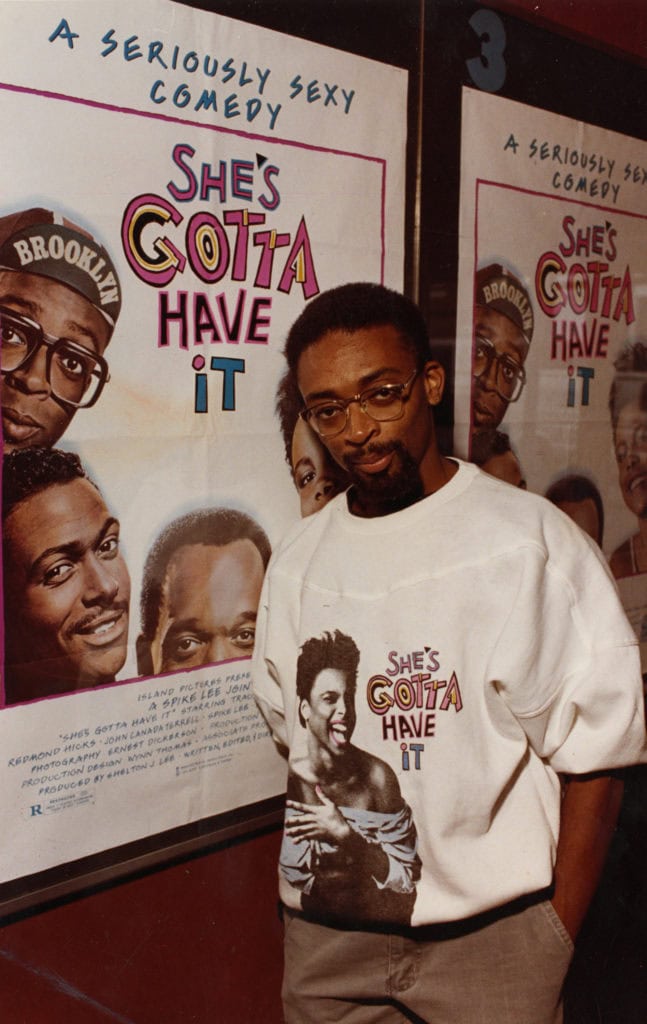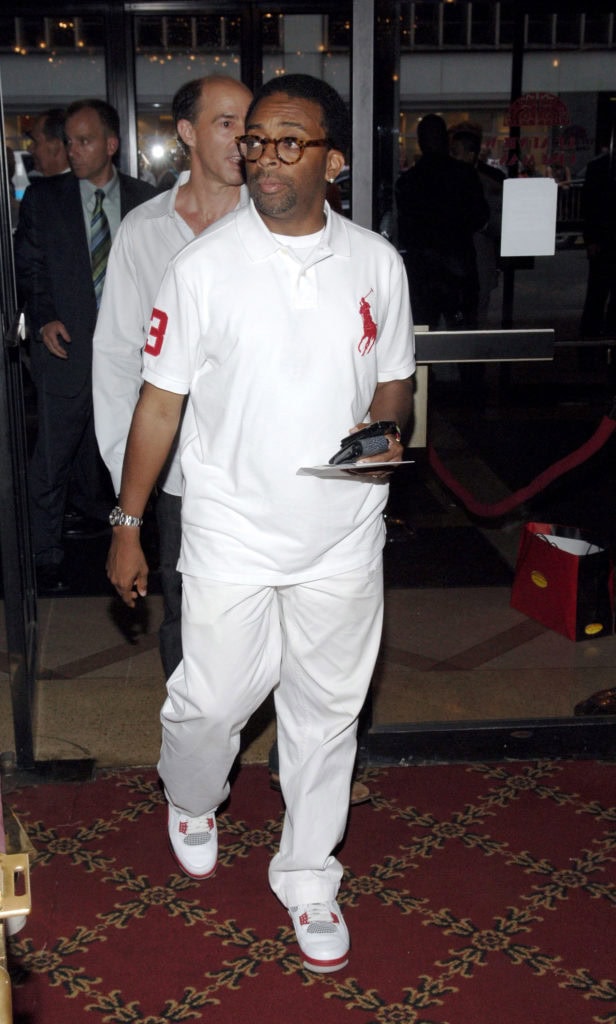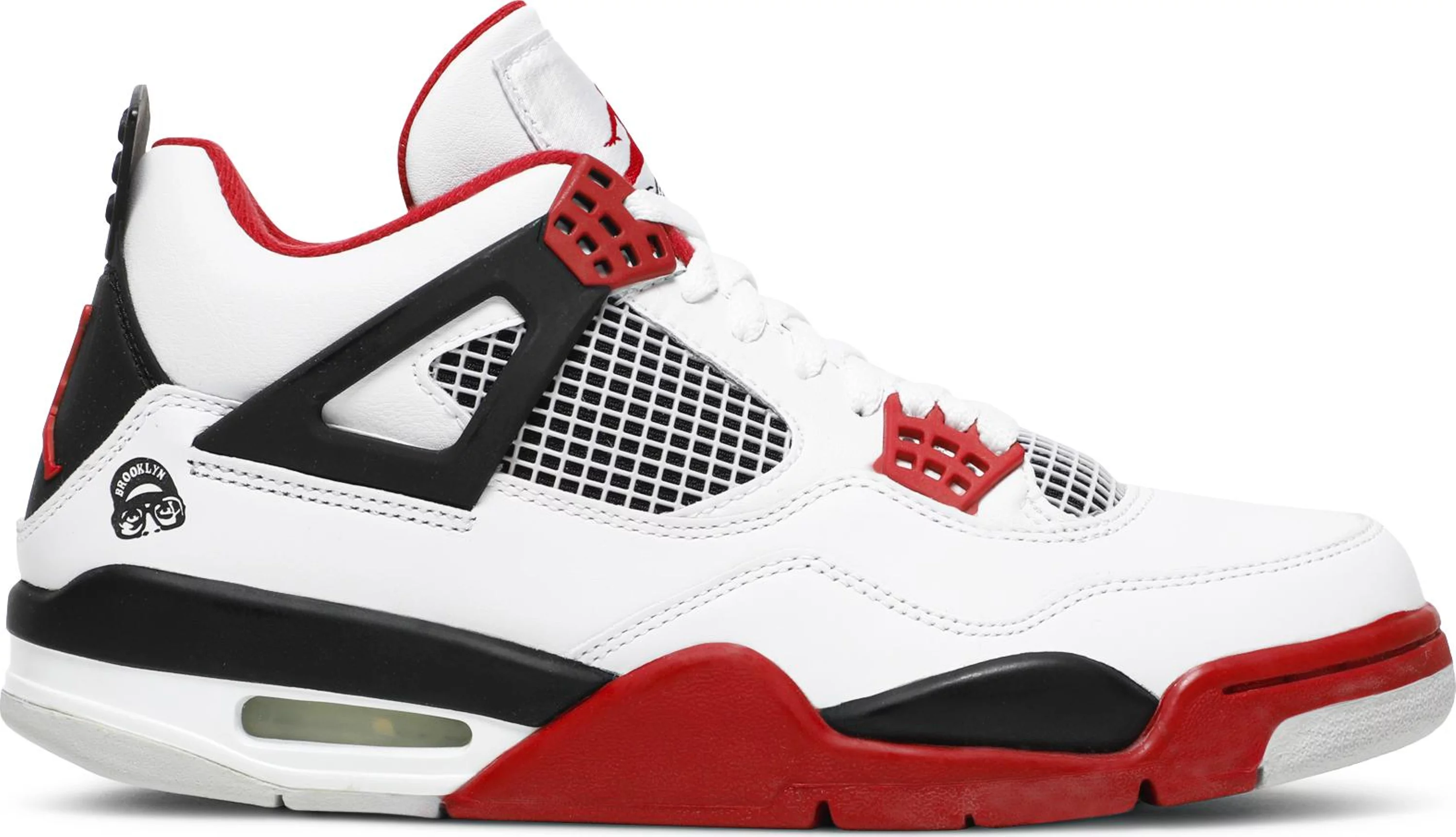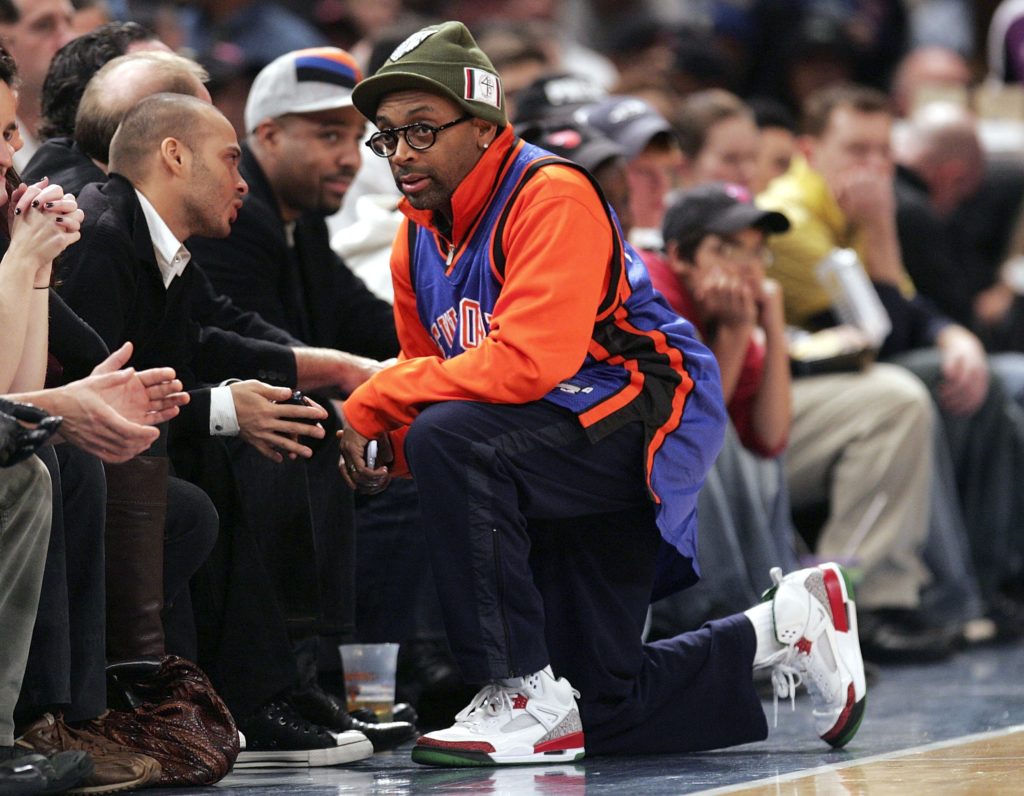When Wieden + Kennedy called Spike Lee to lace Nike’s new ad campaign, the famed director dialed his own number as She’s Gotta Have It character Mars Blackmon. Get the story behind the story.
Nike celebrated 50 years of existence last week with a celebratory spot titled “Seen It All.” Canvasing a half-century of campaigns, the Swoosh had the tall task of condensing an array of athletes and advertisements into a two-and-a-half-minute highlight reel aimed at applauding the past while looking toward the future.
So, who could cover all of Nike’s commercial hits in a fashion deemed authentic, archival, and ahead? Do you know? Do you know? Do you know?
Of course, the answer is Spike Lee. Directing the clip from a seat he’s held before while reprising his role as Mars Blackmon — a character created for his directorial debut, She’s Gotta Have It — the storied creative came through in the clutch to depict Nike’s ongoing legacy from a vantage point all his own. At the end of the clip, both Lee and co-star Indigo Hubbard-Salk deliver the iconic line while throwing up their own personal pairs: “It’s gotta be da shoes!“
Indigo, depicting a young protagonist named Zimmie, throws up a green Off-White x Nike Air Force 1 rumored to release later this year at the Brooklyn Museum. Brooklyn’s own, Lee, lifts up the Air Jordan 4 in its infamous “Fire Red” color palette. While the iconic OG returned to the masses in the Fall of 2020, Lee’s personal pair in the commercial dates back to 2006: the “Mars Blackmon” Air Jordan 4, inspired by his classic commercials from the late 1980s.
For fans of retro releases tied to Jordan Brand, the split-second share by Spike garnered a double-take. The scorching sneakers stamped with Lee’s legacy character are not often spotted on screen or in the wild.
Mars & Mike
The origin item bridging Michael Jordan to Spike Lee is less a pair of sneakers and more a Brooklyn-billed cycling cap. With 1986’s She’s Gotta Have It, the New York native played both sides of the camera, hopping on-screen as Blackmon, an undersized Knicks fan enamored of Air Jordans who steals the show with his oversized personality and poignant wit.
As history tells it, the advertising minds at Wieden + Kennedy loved Lee’s character, casting him as co-star and director for an upcoming Air Jordan commercial.

“That film introduced the world to Mars Blackmon, the original sneakerhead,” Lee told Boardroom. “Because of that film, the character Mars Blackmon got hooked up with Michael Jordan, which changed everything for Nike.”
Nike now had cultural credit and an unorthodox spokesperson. Spike now had another stream of income. For Spike, the initial payout for the first shoot was a cool $50,000 and a day with Michael Jordan. More valuable than money, the nationwide exposure was everything for the young director.
“He could have easily picked some big-time director; people who are giants in that industry, and he chose me,” Lee said. “So I said Mike, why did you choose me? He said, ‘muthafucka you wearing my shoes!’ I’m here to say, I’m honored Michael Jordan called me a muthafucka.”
Honor aside, the timing couldn’t have been better for Spike or Mike.
In the late ’80s, Lee leaped from rising director to cultural provocateur. The initial success of She’s Gotta Have It expanded with School Daze in 1988 and exploded with Do the Right Thing in 1989. At the same time, a creative shift was happening within the Air Jordan enterprise. Design duties for Mike’s flagship silo transferred from Peter Moore and Bruce Kilgore to Tinker Hatfield. Suddenly, sport, art, and innovation were colliding under the eye of the pole-vaulter-turned-architect. On court, Mike was winning Dunk Contests, scoring titles, and MVPs. On screen, Spike sprinkled cultural currency and comedy all over the Air-assisted shoes.
The recipe was tasty and proven. For the latter part of the 1980s and into the early 1990s, Spike served as the pitchman for Air Jordan models 3 through 6, playing the role of Mars Blackmon on TV, posters, and in print ads. Making MJ the straight man and Mars the overwhelming attention grabber, famous soundbites from Lee led the shoes in the zeitgeist through a path parallel to Mike’s brash play on the court. The duo was dynamic and industry-shifting.
As Mike got older, his audience grew both larger and younger. Pivoting from the cinematic spokesman, Nike linked Mike with the Looney Tunes for an array of ads and eventually Space Jam. Years later, Air Jordan ads in the latter parts of the 1990s played on Mike’s GOAT status, steering away from kids and comedy in favor of an elevated, more mature appeal.
All the while, Spike continued to kill it at the box office. Movies like Malcolm X, He Got Game, and Summer of Sam showcased history and commentary, shaping the career of an icon behind the lens. Despite more serious films, Lee’s legacy would not be forgotten by footwear or his main man Mike. In the early 2000s, Jordan Brand brought back Spike in advertisements tied to MJ’s retirement from the game and the avant-garde Air Jordan XX.
All the while, the partnership between the confident creative and the otherworldly athlete was the perfect pairing of work and play. As time passed between the original commercials and new campaigns, nostalgia only grew stronger. Like Mars Blackmon on screen decades prior, kids continued to covet Air Jordans by the bunches.
Only this time, the kids were younger and the shoes were older.
Retro Reprise

As Michael Jordan was transitioning from the backcourt to the front office, his namesake brand was learning how to advance in the market while making the most of its storied past. After a brief brush with retro during Mike’s 1994-95 baseball break (also coinciding with the 10-year anniversary of Nike x Mike), the appetite for old found proof of palette in 1999.
Fresh off Mike’s second retirement, the Air Jordan 4 Retro returned in original White/Cement and Black/Red colorways as it turned 10. A positive reception set the stage for a booming business of throwback sneakers tied to Mike, with other models and color combos coming back at a rampant rate. While the first foray in Air Jordan 4 Retros captivated collectors, it created hunger pangs as the infamous “Fire Red” rendition evaded a re-release.
For years, Jordan Brand teased the model Spike advertised and Mike endorsed by way of off-kilter twists. In 2005, a limited “Laser” iteration was launched as an online exclusive. Years later, Air Force 1 hybrids hit shelves in the Picante palette. Finally, after 17 years in the archive, the classic colorway returned — with a cinematic spin. Sporting a stamped homage on the heel, the Air Jordan 4 Retro “Mars Blackmon” stepped into storytelling subtly, yet strongly. Rather than rattle off statistics from Mike or further heighten hoop heroics, the shoe showcased the image of Mars in the same space an Air Force 1 would highlight an international flag or city stamp.

At first, fans were torn. The wait to get a proper “Fire Red” retro was nearly two decades with noticeable details differing from that of the OG. However, this commercial crossover came to win over fans of all ages, setting the tone for a litany of lifestyle color stories rolled out by Jordan Brand in years to come. No longer were Air Jordan retros relegated to on-court colorways or original motifs. Rather, it was entirely possible that an iconic ad could hit a nerve with fans in the same fashion as a game-winning buzzer-beater.
After years of co-billing on-screen, Spike finally had his own homage from Jordan Brand at retail. The Air Jordan 4 Retro “Mars Blackmon” sold through at stores across the country, introducing fans of all ages to a story not set in sport. Today, the shoes are a collector’s item coveted by millennials and Gen Z consumers alike. In hindsight, this featured release wasn’t even the main attraction for the next chapter of Spike and Mike.
Rather, it was only the trailer.
A Second Act

For years, Spike’s role in sneakers was that of director and co-star. In 2006, he finally received a starring spot.
Following the footsteps of his “Mars Blackmon” tribute, the Air Jordan Spizike celebrated Lee’s illustrious advertising career in signature fashion. The hybrid high tops took cues from an array of Air Jordan silos Spike sold on screen, ranging from the elephant print of the Air Jordan 3 all the way to the laser-etching of the Air Jordan XX. Introductory installments were limited in scale, first launching in hues attached to Lee’s 40 Acres & a Mule production company.
Initially, reviews were mixed on Spike’s high-profile premier. Rearranging archival Air Jordan DNA has always been polarizing amongst purists while the Pan-African flag palette was alarmingly bold for those that loved Chicago shades. Nevertheless, the shoe grew on an audience of young sneakerheads as time went on. Not only do kids love the new, but creatives loved being seen.
Celebrating the artist over the athlete, the Spizike spoke to a generation of innovators more interested in being like Spike than Mike. Household names like Kanye West and Kid Cudi performed in pairs on stage while the namesake director donned them on the sidelines at Knicks games. Like much of Lee’s most abstract work, the viewing public quickly came to understand his message and vision.

Since debuting in 2006, the Air Jordan Spizike has remained a mainstay at retail in some fashion or form. From winterized boot crossovers to spirited sequels, Spike’s staying power is proven by his footprints. Since the Spizike, visual creators ranging from Vashtie Kola to Cole Bennett have collaborated with Jordan Brand on the likes of footwear and apparel. In 2022, Air Jordans aligned with artists continue to spark more fervor with fans than models made for their esteemed roster of athletes. This speaks to new aspirations aligned with the Jumpman and it all started with Spike.
Looking back, it was Lee who broke the mold when it came to elevating creatives in the footwear world. As Nike turns 50, renowned for its clout and cache in spaces of artistry and social justice, no one sums up where they’ve been and where they’re going better than Spike.
In 2022, Mars Blackmon lives on through film and even NFTs. However, on Nike’s golden birthday, it’s still gotta be da shoes.